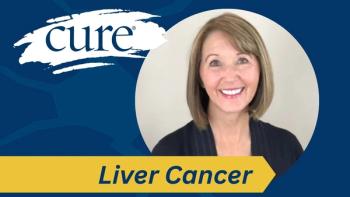
Meditation for Cancer Pain Management
Using mediation and proper breathing can assist with pain management.
I have heard from many women lately who are worried about pain management following surgery and procedures for breast cancer. I personally do not care to take pain killers whenever possible, and after my own procedures opted to take nothing more than a Tylenol #3 or Toradol if tolerate. But I can also share that there were days following surgeries where I initially did not have a choice and unknowingly was given such strong opiates as Fentanyl or other prescribed medications. Eventually when I learned what I was prescribed, I made a request to take less sedating and powerful opiates. Toradol, which is not sedating and documented to be relatively non-addictive, is additionally great for anyone in recovery. Unfortunately, Toradol can only be taken in small quantities for short periods of time or it can be damaging to the liver. My other options during the healing process included using what I was learning in yoga teacher training at the time and this was the process of using breath for relaxation. Using meditation and proper breathing can assist with pain management, so my experiment of learning to manage breathing for pain began.
I took advantage of my yoga and pranayama practice to learn how to use my ability to breathe to help decrease pain and then I learned to combine that with imagery and other mindful tools and techniques. One thing I learned very quickly was if a fellow teacher suggested I take a deep breath, my breathing was not going to be very deep. Breathing after surgeries was limited due to the pain of moving my upper body, even for something as simple as a deep breath. I suspect my attempt at a deep breath felt more like a gasp, which led to more pain.
What worked for me was taking a slow shallow breath that was a comfortable as possible. I made the inhales and exhales as slow and steady as possible for a sense of peace and relaxation. If I was able, I added a gentle pause between each inhale and exhale. I also learned the larger challenge for a meditative state was to turn off all the stuff that was bouncing around in my head.
I used my senses to connect physically, and mantras to connect psychologically. I used statements and themes such as “I am healing” to help settle my mind and to help me build focus on a meditative breathing practice. During my journey of healing, I was reminded of when I was a toddler and how I had a favorite blue blanket I used for comfort. While healing, my blanket was a beautiful grey faux fur, which felt extremely soft, cool and gentle to the touch. I would place this blanket on my lap or wrap myself in it on cooler days. When I could move around with some level of comfort, I lit a candle, which was meant to further soothe the senses. I would then settle into my space with either eyes open or eyes closed to begin the process of doing nothing other than focusing on my ability to breathe and heal. As I practiced and over time, my ability to feel less pain improved and my comfort level of telling myself I was doing something active and within my ability to heal also began to grow in my mind and in my body. I found that if I began to feel anxious, I could go back to my breath, comforting my senses and using mantras or imagery of peaceful places whenever needed. This practice was very helpful as I later found myself going in for an emergency surgery due to an unfortunate infection. Thoughts of dying, negative messages of why couldn’t I heal and not being able to be as productive as usual could be turned off with the meditative breathing, and constructive thoughts could replace the negative. If nothing else, I would focus on words which were more helpful than fears or worries which did not help me to relax. Practicing gratitude was helpful as I could take an inventory of the positives rather than the negatives in my life.
I encourage others to try meditative breathing on your own or even with an app on your phone. Fill your thoughts with positive affirmations, take an inventory of the positives in your life and picture calming and peaceful places you have visited. Or, maybe even picture your body in a state of healing along with taking slow and steady inhales and exhales. This can not only help with pain management, but also from a physiological perspective, the relaxed breathing helps with healing because moving the lungs with breath which helps to move lymph fluids for detoxification in the body then relaxes the muscles in the body which helps allow for improved blood flow. The ability to find a sense of peace also helps decrease the release of cortisol, the stress hormone, in the body. The increased blood flow aids in allowing for improved oxygen to reach the organs for the healing process. So, while you might think breathing is just for the mind, you actually are helping in your healing process when you practice mindful breathing. While it is not meant for me to judge anyone for taking medication, I only hope you can also find that focusing on your breath while healing can be supportive, no matter what your personal pharmaceutical choice or situation.
If you are looking for help to practice such skills, inquire with your oncologist, local cancer support community or hospital to learn about approved providers or programs such as Yoga 4 Cancer (Y4C). Don’t be afraid to speak with your medical team about alternative medications to manage pain as there are often many options, and don’t judge yourself if you practice meditation and you don’t find immediate relief. It takes time and practice, but meditation is a gift you can give yourself from this experience which can last for the rest of your healthy life.




